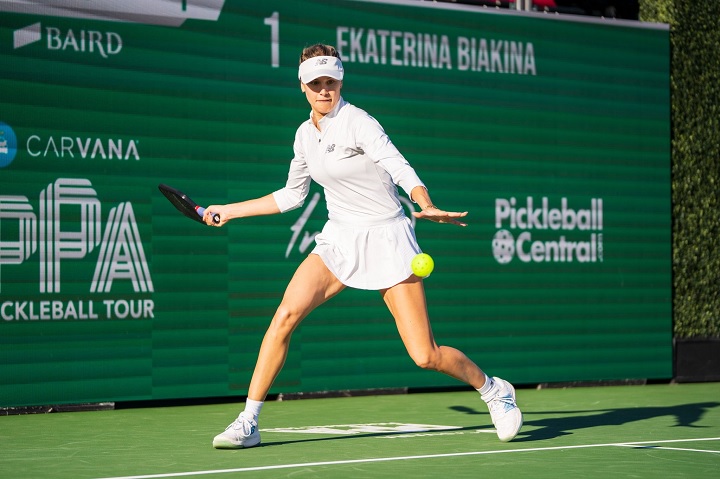
Genie Bouchard, the Canadian tennis star, recently made her professional debut in pickleball, a sport that has been gaining popularity worldwide. In a recent interview, she shared her insights on this new venture and highlighted the distinctions between pickleball and tennis.
For those unfamiliar with pickleball, it is a paddle sport that combines elements of tennis, badminton, and table tennis. It is played on a smaller court with a lower net and uses a paddle and a plastic ball with holes. The game can be played in singles or doubles, and the rules are relatively easy to grasp, making it accessible to people of all ages and skill levels.
Bouchard expressed her excitement about trying something new and challenging herself in a different sport. She mentioned that she was drawn to pickleball because of its similarities to tennis, but also because it offered a fresh perspective and allowed her to explore new strategies and techniques.
One of the main distinctions Bouchard highlighted between pickleball and tennis is the size of the court. Pickleball courts are significantly smaller than tennis courts, which requires players to adapt their playing style. Bouchard mentioned that the reduced court size demands quicker reflexes and more precise shots, as there is less time and space to cover.
Another significant difference lies in the equipment used. In tennis, players rely on a racket with strings, while in pickleball, a paddle is used. Bouchard noted that the paddle’s solid surface provides a different feel compared to the stringed racket, requiring adjustments in grip and shot execution.
Furthermore, Bouchard emphasized the importance of strategy in pickleball. While tennis often involves long rallies and strategic positioning, pickleball requires players to be more aggressive and proactive due to the smaller court size. Bouchard mentioned that she had to adapt her playing style by being more assertive at the net and taking advantage of opportunities to attack.
Despite these distinctions, Bouchard also highlighted some similarities between the two sports. She mentioned that her tennis background helped her in terms of footwork, court awareness, and shot selection. Additionally, the hand-eye coordination developed through years of tennis training proved to be beneficial in pickleball as well.
Bouchard’s professional debut in pickleball has not only brought attention to the sport but also sparked curiosity among her fans and fellow athletes. Her willingness to explore new avenues and challenge herself demonstrates her versatility as an athlete.
In conclusion, Genie Bouchard’s foray into pickleball has provided valuable insights into the distinctions between this emerging sport and tennis. The smaller court size, different equipment, and strategic adjustments required in pickleball present unique challenges for players. However, Bouchard’s tennis background has undoubtedly contributed to her successful transition and highlights the transferable skills between the two sports. As she continues to explore new opportunities, Bouchard’s journey in pickleball serves as an inspiration for athletes looking to expand their horizons and embrace new challenges.

